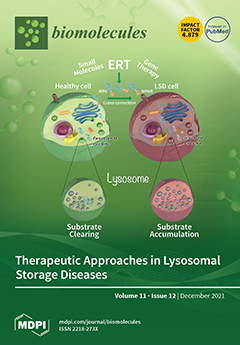Ozoroa insignis Del. is an ethnobotanical plant widely used in traditional medicine for various ailments, including schistosomiasis, tapeworm, and hookworm infections. From the so far not investigated fruits of
Ozoroa insignis, the anthelmintic principles could be isolated through bioassay-guided isolation using
Caenorhabditis
[...] Read more.
Ozoroa insignis Del. is an ethnobotanical plant widely used in traditional medicine for various ailments, including schistosomiasis, tapeworm, and hookworm infections. From the so far not investigated fruits of
Ozoroa insignis, the anthelmintic principles could be isolated through bioassay-guided isolation using
Caenorhabditis elegans and identified by NMR spectroscopic analysis and mass spectrometric studies. Isolated 6-[8(
Z)-pentadecenyl] anacardic (
1), 6-[10(
Z)-heptadecenyl] anacardic acid (
2), and 3-[7(
Z)-pentadecenyl] phenol (
3) were evaluated against the 5 parasitic organisms
Schistosoma mansoni (adult and newly transformed schistosomula),
Strongyloides ratti,
Heligmosomoides polygyrus,
Necator americanus, and
Ancylostoma ceylanicum, which mainly infect humans and other mammals. Compounds
1–
3 showed good activity against
Schistosoma mansoni, with compound
1 showing the best activity against newly transformed schistosomula with 50% activity at 1µM. The isolated compounds were also evaluated for their cytotoxic properties against PC-3 (human prostate adenocarcinoma) and HT-29 (human colorectal adenocarcinoma) cell lines, whereby compounds
2 and
3 showed antiproliferative activity in both cancer cell lines, while compound
1 exhibited antiproliferative activity only on PC-3 cells. With an IC
50 value of 43.2 µM, compound
3 was found to be the most active of the 3 investigated compounds.
Full article






